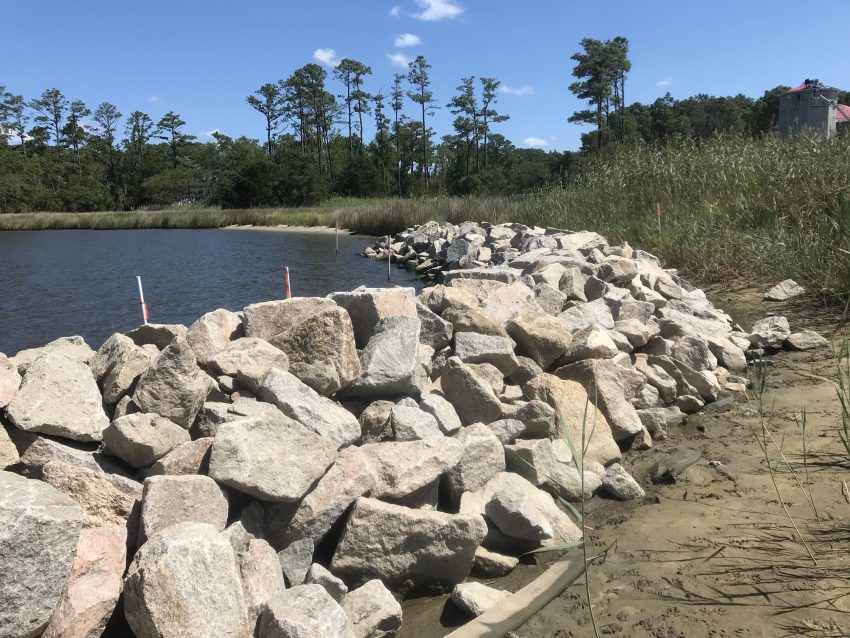
The end of summer marked the completion of construction of a 2,460-foot granite sill living shoreline at the town of Oriental’s Whittaker Pointe peninsula.
The federation worked with the town, Quible & Associates P.C., Carolina Marine Structures, Restoration Systems and local residents to construct the large-scale living shoreline that now helps protect the nearly 300 town buildings, businesses and residences against waves and surge from the Neuse River during storms and routine high wind events.
Restoration Systems planted 8,000 plugs of wetland plants landward of the sill and oyster shell bags will soon be added to the Whittaker Creek side of the project. Finally, additional plants will be planted next spring to complete the project.
“Your faith in our project and Dr. Weaver’s involvement in each step were invaluable and likely the primary reason for its success,” said Oriental Town Manager Diane Miller in a recent letter to the federation.
“This project is a perfect example of the federation’s mission ‘Working Together for a Healthy Coast’,” said Dr. Lexia Weaver, federation Coastal Scientist. “We are so thankful for all of our partners that helped to restore Whittaker Pointe and its valuable habitats.”
Work also continued on a similar project at White Point in the town of Atlantic, which is adjacent to Atlantic Harbor. The harbor is now being protected by a recently completed 1,720 ft. living shoreline made of granite rock. The site also includes the installation of Atlantic Reefmaker EcoSystems wave attenuators that block wave energy while still allowing continued water flow. Wetland plants will be added to the shoreline next spring. Once complete, the living shoreline will help reduce eroding dredge spoil from filling the harbor which was becoming a problem for boat passage. The fishing community depends on the harbor and is enthusiastic about the project.
“Atlantic Harbor is the gateway to Core and Pamlico Sounds, and the Atlantic Ocean for much of the fishing and boating community Down East, yet keeping White Point intact, which protects the Harbor, has proved to be a challenge we have wrestled with for decades,” said Rudi Rudolph, Carteret County Shore Protection Manager. “The granite sill/living shoreline project spearheaded by the federation and Carteret County is aimed to provide a long term solution for the Harbor while providing a tremendous amount of upland, marsh, and shallow water habitat,“ he added.
These living shoreline projects were made possible through funding from the Environmental Enhancement Grant Program, National Fish and Wildlife Foundation, Golden Leaf Foundation, N.C. Department of Environmental Quality and the United States Department of Agriculture Natural Resources Conservation Service Emergency Watershed Protection Program.
To learn more about these projects, click the buttons below:
